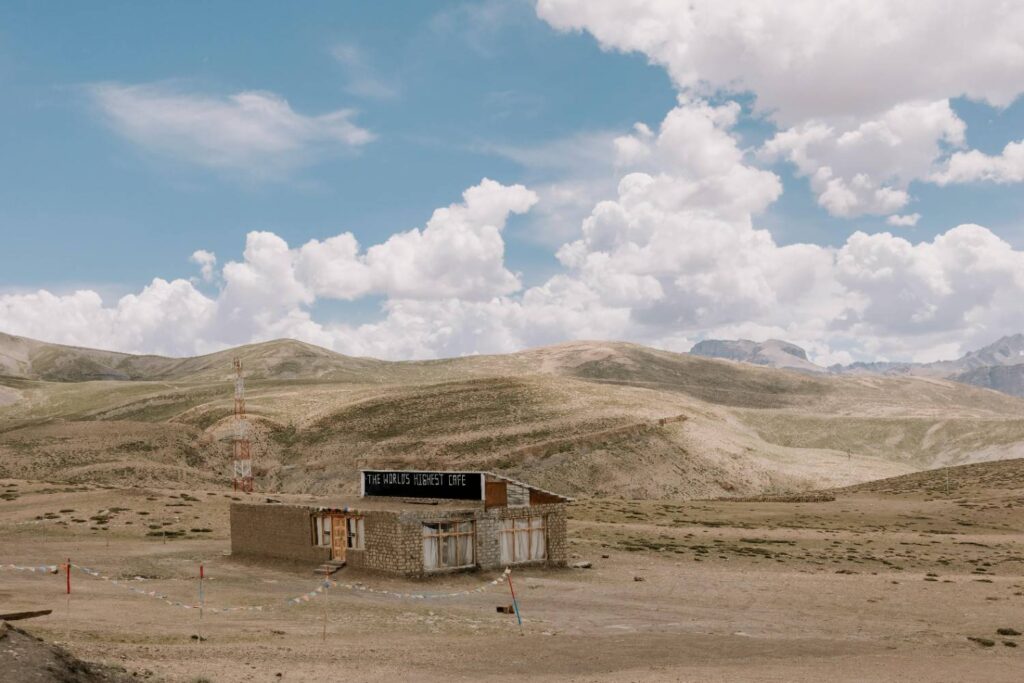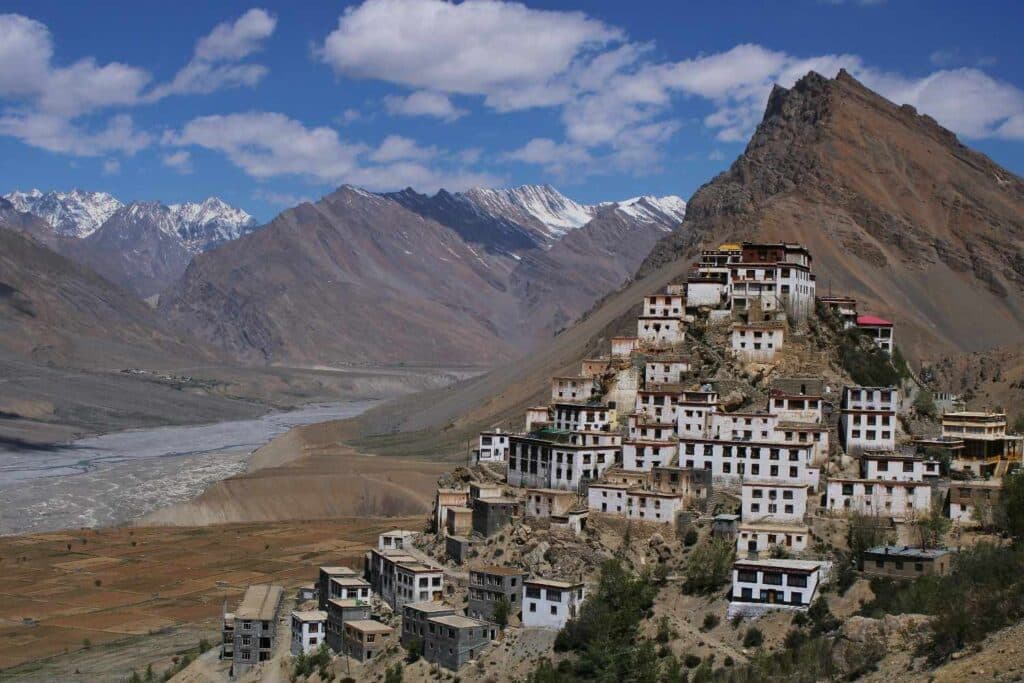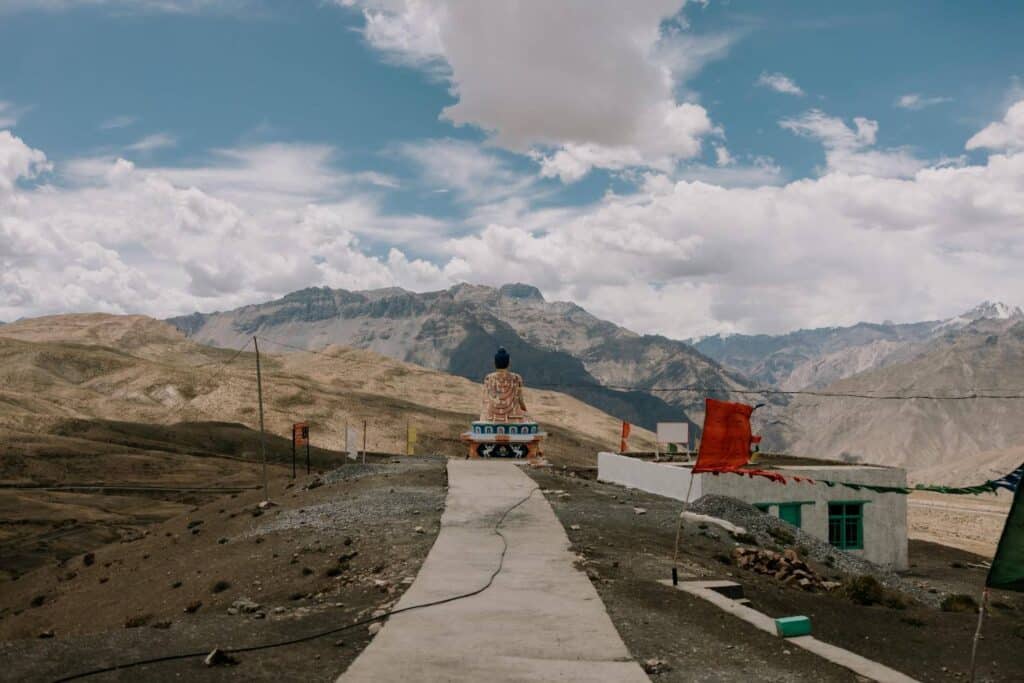
Nestled high in the Himalayas, Spiti Valley is a stunning, remote destination that promises breathtaking landscapes, ancient monasteries, and a true taste of Himalayan culture. Whether you are an adventurer, a photographer, a biker, or a solitude seeker, Spiti offers a unique escape from the modern world. Planning a trip to this high-altitude paradise requires thorough preparation, from selecting the best time to visit to understanding the routes, accommodations, and cultural experiences. This complete travel guide will help you plan a seamless journey to Spiti Valley.
Where is Spiti Valley Located?
Spiti Valley lies in the Lahaul and Spiti district of Himachal Pradesh, nestled between Tibet and Ladakh. The valley sits at an altitude ranging from 11,000 to 14,000 feet, surrounded by barren mountains, deep gorges, and ancient Buddhist monasteries. The name “Spiti” translates to “The Middle Land,” referencing its location between India and Tibet, making it a place where cultures and landscapes converge in a surreal setting.
Best Time to Visit Spiti Valley

The best time to visit Spiti Valley depends largely on the type of experience you’re seeking:
- Summer (Mid-May to Mid-October): This is the ideal time for a road trip as the Manali and Shimla routes are open. The weather is pleasant, and all villages and attractions, including trekking paths and monasteries, are accessible. The summer months also bring lush greenery to the valley, making it perfect for nature lovers.
- Winter (November to March): For those seeking an extreme adventure, winter in Spiti offers an untouched, raw beauty. Temperatures can drop to -30°C, and the valley is covered in snow, making it difficult to access most areas by road. However, the serene snowfall and stillness of the region offer a transformative experience.
- Monsoon (July to Early September): The monsoon season is not ideal for travel due to the risk of landslides on certain routes, particularly the Shimla side. The Manali-Kaza road remains clearer, but it is best to check road conditions before planning your trip.
How to Reach Spiti Valley
Spiti Valley is accessible by road from two primary routes:
Via Shimla (All-Season Route):
- Route: Shimla → Narkanda → Rampur → Kalpa → Nako → Tabo → Kaza
- Travel Time: 2–3 days with several halts.
- Road Condition: Generally better, accessible even in the early months of the season.
Via Manali (Seasonal Route – Open from June to October):
- Route: Manali → Rohtang Pass → Gramphu → Kunzum Pass → Kaza
- Travel Time: 1–2 days, depending on weather conditions.
- Road Condition: The route is more scenic but can be treacherous, particularly in stretches.
Nearest Airport: Bhuntar Airport in Kullu (approximately 250 km from Kaza).
Nearest Railway Station: Shimla Railway Station.
Permits and Inner Line Requirements
For Indian Citizens:
No permits are required unless visiting restricted areas like Dhankar, Tabo, or Komic via Shipki La Pass.
For Foreign Nationals:
An Inner Line Permit (ILP) is required to visit Dhankar, Tabo, and Kaza. These permits can be obtained from the DC Office in Shimla, Manali, or Reckong Peo and are valid for 14 days.
Top Places to Visit in Spiti Valley

1. Kaza – The Heart of Spiti
Kaza, the administrative capital, serves as the base for exploring nearby attractions. It has decent hotels, cafes, and homestays offering local flavors and comfort.
2. Key Monastery
Located atop a hill, Key Monastery is the largest in Spiti and offers panoramic views of the valley. It is over a thousand years old and a must-visit spiritual landmark.
3. Kibber Village
Kibber, at an altitude of 14,200 ft, is one of the highest villages in the world connected by a motorable road. It is the gateway to Pin Valley National Park.
4. Hikkim – World’s Highest Post Office
Visit Hikkim, which houses the world’s highest post office at 14,567 feet. Don’t forget to send a postcard from here!
5. Langza – The Fossil Village
Langza is famous for its fossil hunting and the Buddha statue that overlooks the valley. It’s a peaceful village offering breathtaking views of the surrounding mountains.
6. Dhankar Monastery and Lake
A cliffside monastery overlooking the confluence of the Spiti and Pin Rivers. A short trek will lead you to Dhankar Lake, set against snow-capped peaks.
7. Tabo Monastery
Known as the “Ajanta of the Himalayas,” Tabo Monastery is over a thousand years old and houses ancient murals, scriptures, and Buddhist relics.
8. Chandratal Lake
A turquoise lake surrounded by the barren landscape, ideal for camping and photography. Accessible via Batal, the lake offers a surreal experience.
Suggested Spiti Valley Itinerary (9 Days)
Day 1: Shimla to Sarahan
Day 2: Sarahan to Kalpa
Day 3: Kalpa to Nako (via Khab Sangam)
Day 4: Nako to Tabo to Dhankar
Day 5: Dhankar to Kaza (visit Key and Kibber)
Day 6: Kaza to Hikkim, Langza, and Komic
Day 7: Kaza to Chandratal Lake (via Kunzum Pass)
Day 8: Chandratal to Manali
Day 9: Buffer day or back to Delhi
Where to Stay in Spiti Valley
Accommodations in Spiti range from budget guesthouses to luxury boutique hotels and homestays that offer an authentic cultural experience. Key accommodation spots include:
- Hotels in Kaza: Delek House, Zostel, Hotel Deyzor
- Homestays: Available in Langza, Kibber, Tabo, and Hikkim.
- Camping: Ideal near Chandratal Lake and Dhankar Lake.
What to Pack for Spiti Valley
Essential Items:
- Warm Layers (thermals, fleece, down jacket)
- Windproof Jacket and Gloves
- Comfortable Trekking Shoes
- Sunscreen (SPF 50+), Lip Balm, Sunglasses
- Power Banks, Portable Oxygen Cans (optional)
- Basic Medicines and First Aid Kit
- Offline Maps and Extra Cash (ATMs are scarce beyond Reckong Peo)
Health and Acclimatization
Due to its high altitude, Acute Mountain Sickness (AMS) is common. To avoid it:
- Ascend gradually and prefer the Shimla route for better acclimatization.
- Stay hydrated and avoid alcohol.
- Diamox can help prevent AMS—consult a doctor before your trip.
Connectivity and Fuel
- Mobile Connectivity: BSNL and Jio work in Kaza; Airtel and Vodafone often lose signal beyond Kalpa.
- Fuel: Petrol pumps are available at Reckong Peo and Kaza.
- ATMs: Rare and often non-functional—carry adequate cash.
Responsible Travel Tips
- Carry reusable bottles to avoid plastic waste.
- Do not litter; always carry your trash back.
- Respect local customs, monasteries, and wildlife.
- Travel with local guides for a more immersive experience.
Final Thoughts
A trip to Spiti Valley is not just about scenic landscapes; it’s about immersing yourself in the raw beauty of the Himalayas, experiencing ancient Buddhist culture, and venturing into a world that feels both timeless and new. Whether you are trekking through rugged mountains or sipping butter tea with locals, Spiti promises memories that will last a lifetime. Plan ahead, pack wisely, and respect the land—Spiti will reward you with an unforgettable journey.
1. What is the best time to visit Spiti Valley to experience both natural beauty and cultural festivals?
The best time to visit Spiti Valley is between May and October. During these months, the weather is relatively mild, with clear skies and warm days. If you’re interested in experiencing local festivals, August and September are ideal as they align with traditional festivals like the Lohsar (Spiti New Year) and Fagli Festival, which showcase the region’s rich cultural heritage.
2. How can I reach Spiti Valley, and what are the most convenient transport options?
Spiti Valley is located in the Himachal Pradesh region of India, and the most common way to get there is via road. The nearest airport is Bhuntar (near Kullu), but it is not well connected to major cities. The most convenient option is to take a bus or private car from Manali or Shimla. The road trip from Manali to Kaza (Spiti’s district headquarters) is popular and offers stunning views of the Himalayan ranges.
3. What permits or documentation do I need to travel to Spiti Valley?
Since Spiti Valley is located near sensitive areas like the Tibetan border, you will need an Inner Line Permit (ILP) to travel to certain parts of the valley. The permit is required for foreign nationals, and it can be obtained from Shimla or Kullu. Indian nationals do not need this permit, except for areas like Langza, Hikkim, and Komic, which are closer to the border.
4. What are the essential items to pack when traveling to Spiti Valley, especially considering its high-altitude terrain?
When traveling to Spiti Valley, pack for extreme weather conditions:
Warm clothing (thermal layers, fleece jackets, down jackets)
Sturdy hiking boots
Sunscreen (the sun can be intense at high altitudes)
Hat, gloves, and scarf
Water bottle with purifier
First aid kit (including altitude sickness medication)
Power bank (for charging devices in remote areas)
Camera (to capture the stunning landscapes)
Snacks (since there may be limited food options on some treks)
5. Are there any health precautions or vaccinations recommended before visiting Spiti Valley?
It’s advised to consult a doctor before visiting Spiti Valley, especially if you’re coming from low altitudes, due to the risk of altitude sickness. Some basic health precautions include:
Altitude sickness medication (Diamox or similar)
Vaccines for hepatitis A, B, and typhoid (recommended for travelers to remote areas)
Basic medications for common travel-related issues (diarrhea, headaches, etc.)
Keep in mind the dry, high-altitude air, which can affect breathing and hydration.
6. What are the best trekking routes in Spiti Valley for first-time trekkers?
Pin Parvati Pass Trek: A moderate trek linking the Kullu Valley to Spiti, passing through lush forests and high-altitude lakes.
Kibber to Tashigang Trek: An easy to moderate trek offering breathtaking views of the Spiti River valley and its unique Buddhist villages.
Chandratal Lake Trek: A relatively easy trek that takes you to the stunning moon-shaped lake at an altitude of 4,300 meters, offering a magnificent view of the surrounding peaks.
7. What is the availability of accommodation in Spiti Valley, and can I expect a variety of budget-friendly options?
Spiti Valley offers a wide range of accommodation options, from budget guesthouses to mid-range hotels and homestays. Most towns like Kaza, Key, Tabo, and Chandertal have several guesthouses where you can stay for as little as INR 500-1000 per night. For those looking for a more unique experience, several homestays are available in remote villages, offering an opportunity to interact with local families.
8. Can I rent a vehicle in Spiti Valley, or is it better to hire a local guide for transportation?
Renting a vehicle is possible, but it’s advisable to hire a local guide or driver with experience in the rough and unpredictable roads of Spiti. Local drivers are familiar with the terrain and can ensure your safety. If you’re traveling solo, joining a guided group trek or tour might be more convenient and informative.
9. What are some hidden gems or off-the-beaten-path spots in Spiti Valley that are worth exploring?
While Spiti is known for its iconic spots like Key Monastery, Chandratal Lake, and Tabo Monastery, there are several hidden gems:
Langza Village: Known for its fossils and stunning views of Mount Chau Chau Kang Nilda.
Hikkim: Home to the world’s highest post office, where you can send postcards.
Komic Village: One of the highest motorable villages in the world, offering a peaceful and serene atmosphere.
Dhankar Lake: A beautiful lake surrounded by steep cliffs, perfect for a tranquil retreat.
10. How do I prepare for the extreme weather conditions in Spiti Valley, and what safety measures should I take?
To prepare for the extreme weather, consider the following:
Dress in layers: The temperature can drop significantly, especially at night.
Carry high-SPF sunscreen: The UV index is high at high altitudes, even in cold weather.
Stay hydrated: Dehydration can set in quickly at high altitudes, so drink plenty of water.
Take acclimatization breaks: If you’re traveling to higher altitudes, spend a day or two to adjust to avoid altitude sickness.
Monitor weather forecasts: The weather in Spiti can change rapidly, so it’s important to keep an eye on forecasts and be prepared for sudden storms, especially in the monsoon season.